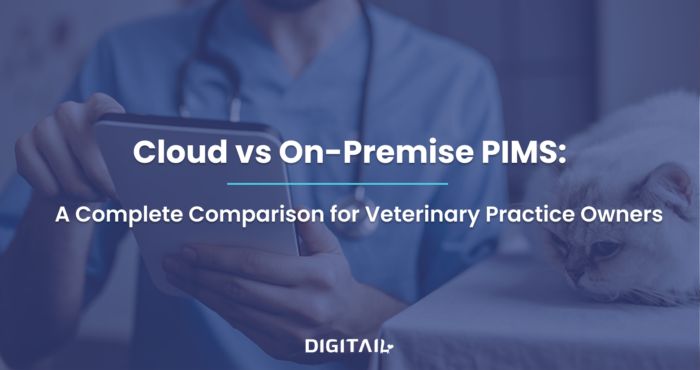
Mastering Team Communication in Veterinary Clinics
In the high-stakes, emotionally charged environment of a veterinary clinic, effective communication is not merely a benefit but a necessity. A lack of clear communication can negatively impact not only the workplace culture but also trickle down to compromise the quality of care and even affect patient outcomes.
Veterinary care involves more than just the touch of a skilled veterinarian; it necessitates a symphony of well-coordinated actions from an entire team. While the focus often rests on client communication, the significance of intra-team dialogue cannot be understated. In a realm where misunderstandings can lead to severe consequences and a toxic work environment, communication within the veterinary team is not just a soft skill—it’s a critical component of effective healthcare delivery.
This article aims to underscore communication’s critical role, considering the unique challenges and diverse responsibilities inherent in operating a veterinary practice.
The Many Faces of a Veterinary Clinic
A veterinary clinic thrives as a collective, not just through the efforts of veterinarians but also thanks to the dedication of nurses, technicians, assistants, receptionists, and management staff. Each member’s role is crucial, acting as a cog in the complex machinery of animal care. The smooth operation of this machinery hinges on a solid foundation of communication, underscoring its imperativeness.

The Detriments of Poor Team Communication
A Culture of Blame
When communication falls short, a culture of blame often fills the vacuum. This blame game can be particularly detrimental in a veterinary clinic, where every decision can have immediate and long-term consequences for the animals under care. It results in delays in diagnoses, poor administration of treatments, and a lack of coherent strategy for patient care.
Inefficient Decision-Making
Poor communication can lead to a paralyzing cycle of indecision. Staff members may find themselves in a whirlpool of conflicting instructions, unclear responsibilities, and misunderstood priorities. This inefficiency translates to longer waiting times for clients, delayed treatments, and missed opportunities for preventive care.
Low Morale and Employee Turnover
A workplace characterized by poor communication invariably experiences a decline in employee morale. The high stress and emotional toll of veterinary practice become exacerbated when team members feel unheard or misunderstood. This environment can result in high employee turnover, which adds another layer of instability and inefficiency to the clinic.
Why Team Communication Matters
Exceptional Patient Care
When everyone is on the same page, treatments are administered on time, updates are communicated swiftly to pet owners, and, in general, the clinic functions optimally to elevate patient care.
Team Rapport
Transparent and frequent communication helps team members understand each other better. A team that gets along will invariably be more coordinated, leading to smoother daily operations.
Crisis Management
During high-stress scenarios like emergency cases or CPR, a breakdown in communication can magnify the stress and hinder the response. A well-defined chain of communication ensures that each team member knows their role, making these challenging situations more manageable.
Professional and Personal Growth
Post-case debriefs and constructive criticism are invaluable for improvement. These discussions help identify strengths and weaknesses and create a culture of continuous learning.
Addressing and Resolving Internal Issues
Open dialogue about operational or interpersonal issues within the clinic can lead to solutions that improve workplace culture and efficiency. The approach matters: be courteous and constructive, offering solutions rather than just criticism.
The Benefits of Improving Team Communication
Increased Operational Efficiency
Good communication acts as a catalyst for clinic efficiency. When roles are clearly defined and information flows seamlessly, tasks are completed more rapidly, and errors are significantly reduced. This operational efficiency, in turn, positively impacts the clinic’s financial health.
Enhanced Client and Patient Experience
Clients can sense when a clinic is well-run, and they are likely to be more trusting when they perceive a high level of professionalism and organization. This trust directly impacts patient care, as clients are more likely to follow through with recommendations and return for future visits.
Boosted Employee Satisfaction and Retention
When a clinic prioritizes communication, employees feel more engaged and satisfied with their work. This leads to better patient care and higher employee retention rates, reducing the costs and operational disruptions associated with frequent turnover.
Strategies for Improving Communication
Before we look at strategies for improving your team communication, let’s review the two main categories of communication:

Task-Oriented Communication: The Foundation for Efficiency
At its core, task-oriented communication is about ensuring that every member of the team knows exactly what needs to be done, by whom, and by when. It’s about eliminating ambiguity and fostering a culture where clarity prevails.
This is achieved through five key practices:

Standardizing Procedures
One of the first steps in enhancing task-oriented communication involves standardizing procedures across the clinic. Clear, written protocols for common tasks ensure that everyone has access to the same information and follows the same steps, reducing the likelihood of miscommunication and errors.
Utilizing Checklists
Checklists are a simple yet powerful tool for ensuring that nothing is missed in the care of patients. Whether it’s a surgical checklist or a daily opening routine, these lists provide a tangible guide to what needs to be accomplished, aiding in communication and accountability.
Implementing Effective Handoffs
Shift changes and patient handoffs are critical moments where communication can falter. Developing a structured handoff process, perhaps through a brief meeting or standardized form, ensures that important information about patient care is transferred accurately and efficiently.
Embracing Technology
Technology can play a pivotal role in supporting task-oriented communication. For example, practice management software like Digitail can streamline scheduling, record-keeping, and task assignments, making it easier for the team to stay on top of their duties. Digital tools for instant messaging or task management can facilitate real-time communication among team members, ensuring everyone is updated on the latest developments.
Regular Training
Ongoing training and refreshers on communication best practices help keep everyone aligned and aware of their roles in ensuring effective task-oriented communication. This training can cover everything from documenting patient care effectively to communicating urgent needs without causing alarm.
The Ripple Effects of Strong Task-Oriented Communication
By prioritizing task-oriented communication, veterinary clinics can experience a multitude of benefits. Not only does it enhance the efficiency and accuracy of patient care, but it also contributes to a more positive work environment. When team members feel confident in their understanding of tasks and responsibilities, it reduces stress and builds a sense of competence and professionalism.
Moreover, strong task-oriented communication can have a positive impact on client satisfaction. When clients see a team that operates seamlessly, with clear communication and efficient handling of tasks, it builds trust and confidence in the clinic’s ability to care for their beloved pets.
Improvement-Oriented Communication: Cultivating a Forward-Thinking Clinic
Improvement-oriented communication thrives on the principle that every team member, regardless of their position or tenure, has valuable insights that can improve the clinic.
How to cultivate this environment:

Creating Safe Spaces for Feedback
The cornerstone of improvement-oriented communication is the creation of safe, non-judgmental spaces where employees feel comfortable sharing their ideas and concerns. This could be formalized through regular feedback sessions or suggestion boxes or as informal as encouraging open-door policies where team members can speak freely with management.
Structured Forums for Discussion
Dedicated meetings, such as monthly staff meetings or quality improvement forums, provide structured opportunities for discussing potential improvements. These sessions should encourage participation from all levels of staff, ensuring that diverse perspectives are heard and considered.
Encouraging a Culture of Experimentation
Improvement often requires a degree of experimentation—trying new approaches, technologies, or procedures to see what works best. Fostering a clinic culture that is not afraid of failure but rather learns from it is crucial. This means celebrating attempts at innovation, even if they don’t always lead to the desired outcome.
Leadership by Example
Leadership plays a critical role in modeling improvement-oriented communication. When clinic leaders openly discuss their ideas for improvement, actively seek feedback, and demonstrate a commitment to making positive changes, it sets a tone encouraging everyone to contribute.
Recognition and Reinforcement
Recognizing and rewarding contributions to improvement validates the individual’s effort and reinforces the clinic’s value for continuous improvement. Whether through public acknowledgment, rewards, or incorporating feedback into clinic practices, recognition helps sustain an environment of proactive communication.
When veterinary clinics master improvement-oriented communication, they unlock a host of benefits. These include increased innovation, as staff feel empowered to bring new ideas forward; enhanced problem-solving, with diverse perspectives leading to more robust solutions; and improved staff engagement and retention, as team members feel valued and part of the clinic’s growth journey.
Moreover, this forward-thinking approach can lead to significant operational improvements, from streamlined processes that save time and resources to enhanced patient care strategies that better meet the needs of both pets and their owners.
A Continuous Cycle of Improvement
Improvement-oriented communication is not a one-and-done initiative but a cyclical process of feedback, implementation, evaluation, and further feedback. It requires commitment and patience, as changes may not always yield immediate results. However, by continually engaging in this cycle, veterinary clinics can foster a dynamic and adaptable environment well-equipped to meet the challenges of veterinary medicine head-on.
Effective communication is not optional for a successful veterinary clinic; it is foundational. Implementing sound communication strategies leads to a more efficient, more harmonious workplace and, most importantly, a higher standard of care for the animals entrusted to the clinic. In a field where the stakes are life and death, the margin for error is minimal, making effective communication an imperative rather than a luxury.
Open, honest communication is the lifeblood of any successful veterinary practice. Each team member, from administrative staff to skilled veterinarians, plays a vital role in this complex ecosystem. By fostering a culture of clear and constructive dialogue, veterinary practices stand to improve not just their internal operations but also the level of care provided to their patients. It’s time to prioritize communication—not just as a buzzword but as a practice-wide philosophy.



